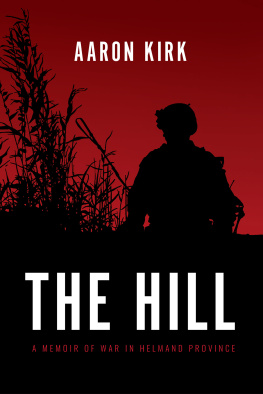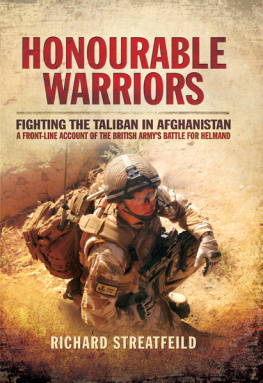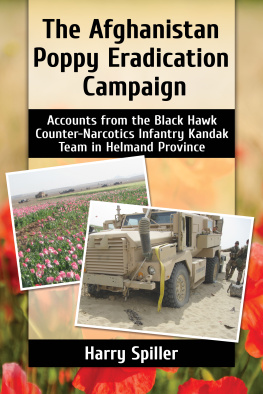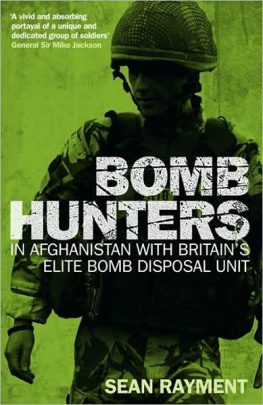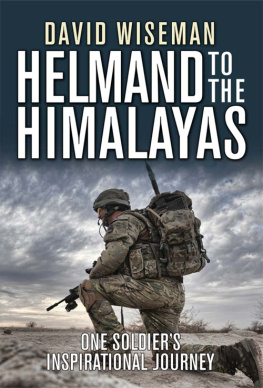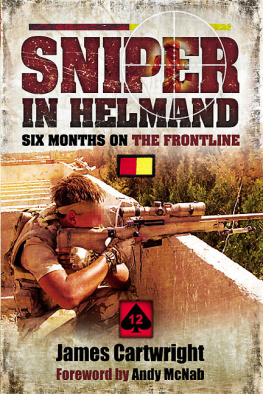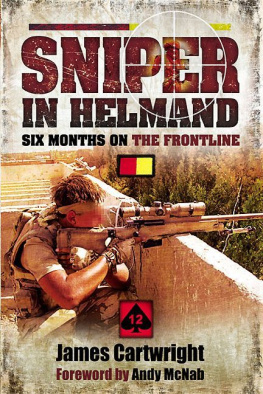Title Page
City of Soldiers
A Year of Life, Death and Survival in Afghanistan
Kate Fearon
Publisher Information
First Published in 2012 by
Signal Books Limited
36 Minster Road
Oxford
OX4 1LY
www.signalbooks.co.uk
Digital edition converted and distributed in 2012 by
Andrews UK Limited
www.andrewsuk.com
Kate Fearon, 2012
The right of Kate Fearon to be identifed as the author of this work has been asserted by her in accordance with the Copyright, Design and Patents Act, 1988.
All rights reserved. The whole of this work, including all text and illustrations, is protected by copyright. No parts of this work may be loaded, stored, manipulated, reproduced or transmitted in any form or by any means, electronic or mechanical, including photocopying and recording, or by any information, storage and retrieval system without prior written permission from the publisher, on behalf of the copyright owner.
Production: Samantha Halstead; Cover Design: Baseline Arts
Cover Image: Yola Monakhov/Panos Pictures
Illustrations: All images courtesy of Kate Fearon except (from print version) pp. 160, 181, 183 and 292 taken from Wikipedia Commons; p.100 courtesy of ALCIS; p.130 Wahedullah Ulfat; pp.152, 266 Derek Griffths; author photo taken by Eamon Kingston.
Quote
The use of force alone is but temporary. It may subdue for a moment; but it does not remove the necessity of subduing again; and a nation is not governed which is perpetually to be conquered.
Edmund Burke, 1775
Acknowledgements
For Derek, who has put the time in.
And to the memory of Mir Wali Khan, briefly a President in his own land.
***
With thanks to Piet Biesheuvel, Paul Bliss, Philippa Brown, Siobhan Fearon, Elizabeth Gowing, Derek Gri#ths, Toby Harnden, Fraser Hirst, Eamon Kingston, Fionnuala Kingston, Jon Moss, Hugh Powell, Tim Radford, Abdul Rahman, Bernadette Salisbury, Lynn Sheehan, Abdul Whakiel, Robert Wilton, Wahedullah Ulfat and my mum and dad for support, encouragement, critique and comment.
Many of the names in this book have been changed to protect the identity of the protagonists.
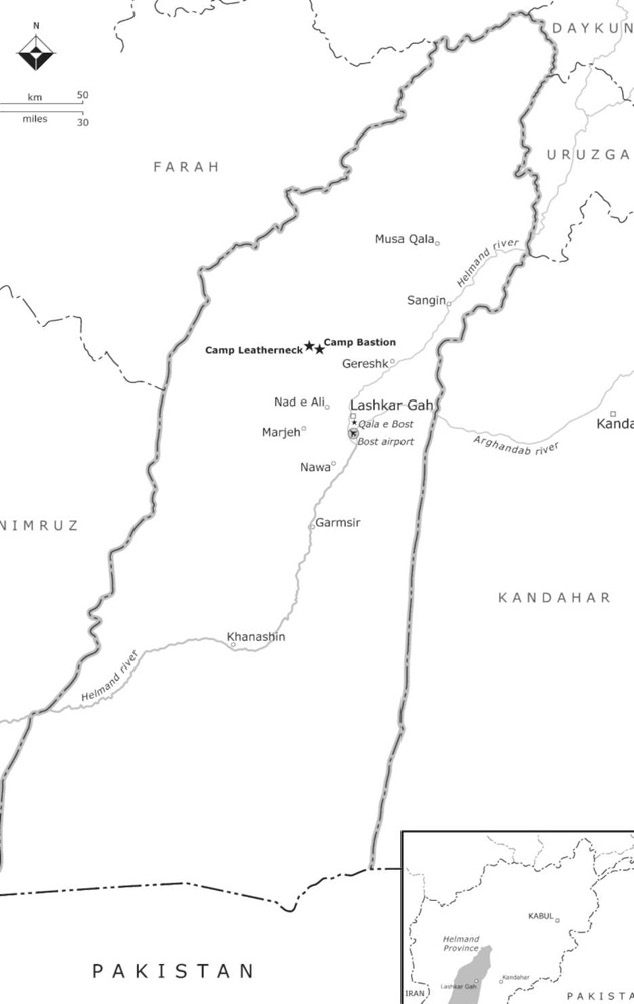
Preface
THIS BOOK IS ABOUT people and place, rather than politics. But the politics of the place, of its people, help explain some of what happens in many of the stories and experiences youll nd in these pages. So the following is literally a thumbnail sketch of the history and politics of where the stories in these pages come from.
In 1946 a subsidiary of an American construction company - the same company that had just built the Hoover Dam and the Golden Gate Bridge - was established in Afghanistan. Its purpose was breathtaking in scale: to bring modernity to the Helmand River Valley by constructing dams, canals, schools, hospitals and asserting the primacy of settled agriculture over nomadic pastoralism - a Green Revolution to challenge that of the Soviets Red one, another front of the Cold War. The effort was centred around a new town built in the image of surburban America by the same company. The new town was Lashkar Gah, which became known as Little America.
Except that it wasnt a new town. Lashkar Gah, or Lash, as I came to call it, had existed since at least the tenth century AD when Sultan Mahmud of the Ghaznavid Empire made it his winter capital, relocating his court and his army there. Its name, in Persian, means City of Soldiers. Genghis Khan came through, plundering, in the thirteenth century, Tamerlane finished off what was left in the fourteenth, but then it was built up again by the Emperor Barbur in the sixteenth century. The irrigation canals had been there since Mahmuds time, and there they remained in varying states of disrepair through the Great Game and the Afghan nation-building of the twentieth century when the Royal Government of Afghanistan decided to commission first the Japanese, second the Germans and then the Americans to build a whole new network. Despite a thirty-year engagement, millions of dollars spent and headlines like Ambassadors with Bulldozers or Taming Rivers and Moving Mountains the effort failed.
The Soviets invaded, the US funding went from development to training and resources for the Afghan opposition - the Mujahideen, out of which the Taliban emerged. The Russians withdrew in 1989, but propped up a puppet president until 1992, when the Islamic State of Afghanistan was created. The country fell into civil war, and the Taliban assumed government over their new state, the Islamic Emirate of Afghanistan, in 1996.
The Taliban in government cultivated an extreme form of Islamic nationalism, manifested in a harsh and restrictive social code, particularly for women. After the 9/11 attacks, the US laid the blame squarely at the Talibans door for providing the training camps from whence the suicide bombers planned their attacks. The US was joined by the UK in invading on 7 October 2001. !ey quickly displaced the Taliban government (though not, as I was to discover, its hold) and the Islamic Republic of Afghanistan was established. It was the sixth incarnation of the state since the contract to bring modernity to the Helmand River Authority was signed in 1946. And the latter three all contained the prefix Islamic.
I had lived with Islam before, in Bosnia and Herzegovina, where I had worked for seven years. I had even completed a Diploma in Islamic Studies, guided by the fine Islamic scholars of the University of Sarajevo. So while I was certainly no expert neither was I a complete ingnue. Or so I thought - Islam in Afghanistan turned out to be very different from that in Bosnia. Id had two jobs in Bosnia. One was building political parties, training their personnel and advising their leaders on election campaign strategy and planning. The other was bedding down the legislation required by the Bosnian peace accords, the Dayton Agreement.
Before that, Id worked on another peace accord, my own - the Good Friday Agreement - in Northern Ireland. Id been a founder member of the Northern Ireland Womens Coalition, established to ensure that womens voices and concerns would make it into the final text of the Agreement.
None of these jobs had been particularly easy, but theyd all been done in places that bore some resemblance to each other, and all took place, more or less, after the end of physical con$ict. When I opted for something completely di%erent I had no idea just how different Afghanistan would be. And when I came home on leave, my family and friends would ask: Whats it really like over there?
This book is my answer to that question.
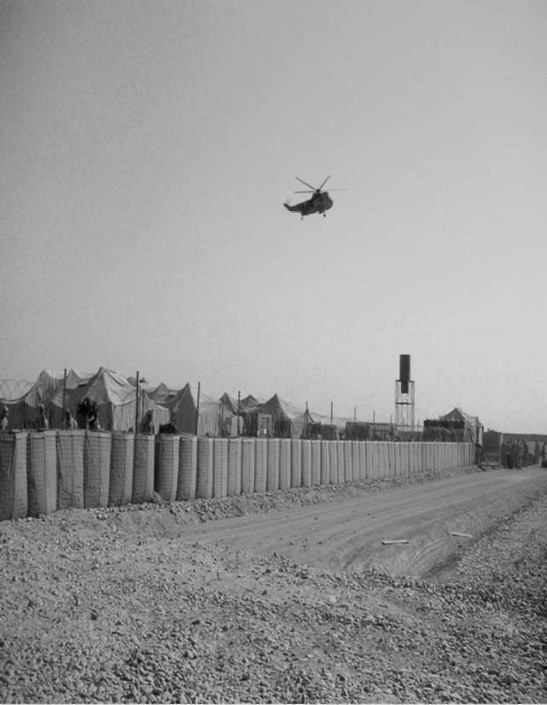
Helicopter landing at Nawa
For details on this, see N. Cullathers excellent article at http://www.nyu.edu/gsas/dept/icas/Cullather.pdf
1. Getting There
THE PILOT SAYS something that I recognize. Allahu Akbar . At least the language of Islam doesnt change, only its interpretation. God is great. He says it three times followed by something which could be the flight safety instructions, or a prayer. It turns out it was the travellers prayer which all pilots on SAFI (an Afghan Airline, which I am taking from Dubai to Kabul) say before takeoff. There are no spare seats on the plane, which doesnt appear to have any Afghanis on it apart from the crew, who are all male with the exception of one young woman. You can always tell something about the socio-economic state of a country by the gender of its airline and waiting staff.
In Bosnia (where I lived for seven years) many Muslims explained how they understood religion - they saw it as a personal communication with God, there was no middle-man at the mosque. I think the pilot has a direct line as the flight is really smooth, especially considering all the baggage that we (mainly white) Westerners are bringing. But well get back to the luggage later.
Next page

